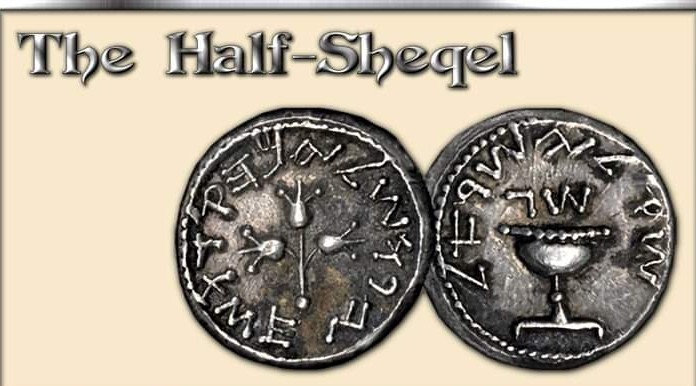Watch
Events
Articles
Market
More
Sabbath Keepers Fellowship & Prison Ministry
Ovadyah Ben Yisrael
From this week’s Torah portion:
“And YHWH spoke to Moshe, saying, ‘When you take the census of the children of Yisra’el, to register them, then each one shall give an atonement for his life to YHWH, when you register them, so that there is no plague among them when you register them. Everyone among those who are registered is to give this: a half-sheqel according to the sheqel of the set-apart place, twenty gerahs being a sheqel. The half-sheqel is the contribution to YHWH. Everyone passing over to be registered, from twenty years old and above, gives a contribution to YHWH. The rich does not give more and the poor does not give less than half a sheqel, when you give a contribution to YHWH, to make atonement for yourselves.’”
Why the seemingly excess verbiage here? Couldn’t the Torah have simply stated that one is to give ten gerah for the annual atonement of this offering? Apparently, the Torah needs to indicate that YHWH very specifically wants a half-sheqel to be given — and to make clear that ten gerah is not an amount that stands on its own, but is half of a complete sheqel that consists of twenty gerah. But shouldn’t this particular atonement offering be symbolic of oneness and unity — a complete sheqel, rather than the fragmentation of a half-sheqel?
As one complete sheqel is composed of twenty gerah: one unit of ten gerah corresponds to the person’s incompleteness without the rest of the community of Yisrael. As its individual members combine, they comprise one whole entity as a complete sacred sheqel. The law of the half-sheqel also teaches us that, while we all have different amounts of resources we are able to give — whether of money, service, charity, or simply love for one another — that we all must contribute to the community and, when it comes to being counted, in the eyes of YHWH the rich and poor are totally equal. We all count the same.
This same concept is the essence of marriage among the children of Yisrael. If each partner approaches the marriage with a sense of his or her self as a complete entity, they will at best achieve only a minimal relationship between two distinct, self-contained lives. But marriage should be much more than that. The ancient sages propose that a husband and wife are the male and female aspects of a single soul, born into two different bodies. For many years they live separate lives, often at a great distance from each other and wholly unaware of the other’s existence. But divine providence from YHWH ultimately contrives to bring them back together under the wedding canopy and accord them the opportunity to become one again – not only one in essence, but also one on all levels—in their conscious thoughts and feelings, and in their physical lives.
Marriage is thus more than the union of two individuals. It is the reunion of a single halved soul, the fusion of two lives originally and intrinsically one. To experience this reunion, each must approach his or her life together not as a “ten,” but as a half. This half-sheqel consists of ten gerah—each must give their all to the marriage, devoting to it the full array of resources and potentials they possess. Yet each must consciously and continually regard himself or herself not as a complete being, but as a partner —one half always seeking its other half to make it whole again.
The lesson then, in these verses from this week’s Torah portion, is that none of us are fully complete on our own. Each person’s half-sheqel needs somebody else’s half-sheqel to be complete. We’re all dependent on each other. That’s what it means to be part of the community of Yisrael – or a marriage. We are all connected to and dependent upon one another. We all have to give and participate for these relationships to be fully complete.



